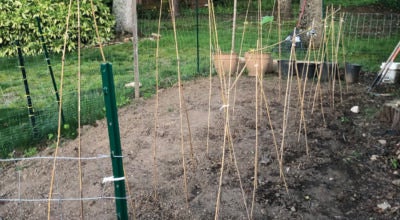Crystal Cockman Column: The survival of chestnut trees
Published 4:47 pm Friday, November 16, 2018
The American chestnut tree (Castanea dentata) was once widespread along the entire east coast from Maine to Florida, covering an area of more than 200 million acres.
It is estimated that 4 billion chestnuts, or one-fourth of all hardwood species, at one time grew over this vast area. At the beginning of the 20th century, the fungal pathogen that causes chestnut blight (Cryphonectria parasitica) was accidentally introduced to the United States from Asia.

Crystal Cockman writes a column for The SNAP through the Three Rivers Land Trust.
First found in New York in 1904, this fungus spread rapidly and by 1950 it had taken out pretty much the entirety of mature American chestnuts.
There are a few blight resistant mature American chestnut trees that hang on and those are the objects of much research. The trees do also often sprout back from the roots and will grow into a sapling before the fungus attacks them and chokes off nutrient flow, killing the tree.
The American Chestnut Foundation (https://www.acf.org/) has a mission to restore the iconic American chestnut to its native range.
In 2005, the organization harvested its first potentially blight-resistant chestnuts. Its goal is to breed blight resistance from the Chinese chestnut tree into the American chestnut tree, while maintaining the American chestnut’s characteristics.
TACF began by breeding a Chinese chestnut with an American chestnut, resulting in a 50 percent American and 50 percent Chinese chestnut tree. They then bred this tree with another American chestnut resulting in a 75 percent American chestnut, and continued crossbreeding until the result was an almost entirely American chestnut tree with the blight resistance of a Chinese chestnut.
I had a friend who had a chestnut tree on a property in Montgomery County, and we sent in a sample to TACF, and found out it was a Japanese chestnut. Interestingly, Stanly County has the state champion Japanese chestnut at Morrow Mountain State Park. That is the only state champion tree that is found in Stanly County. There are two co-champion American chestnut trees in North Carolina, one in Jackson County and one in Alleghany County.
If you have found a chestnut tree and want to see if it could be an American chestnut, you can send in a sample to TACF. Download their tree locator form from their website and fill it out, then send them a freshly-cut 6-12 inch twig with mature leaves attached. You should press the leaves in between cardboard, but not put them in a plastic bag to prevent mold. Spring and summer are the best times to collect leaves.
Three Rivers Land Trust partnered with the American Chestnut Foundation (TACF) to do a study plot on a conserved property in Rowan County. Although this location is likely farther east than American chestnuts were found, it is still a good location to study how various chestnut tree species grow in Piedmont soils. Students from Catawba College are helping with this plot and it will be interesting to see if the American chestnut trees can survive in our Piedmont environment.
Crystal Cockman is land protection director for Three Rivers Land Trust, of which Stanly is part.




